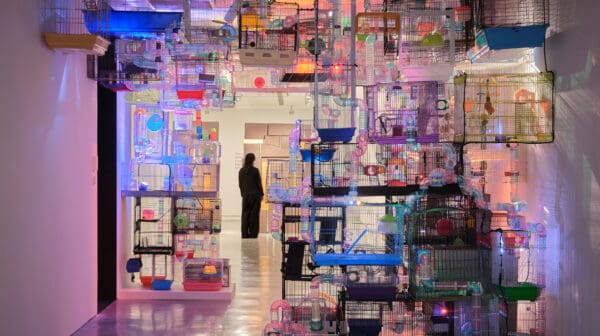
Material curiosities: Primavera 2025
In its 34th year, Primavera—the Museum of Contemporary Art Australia’s annual survey of Australian artists 35 and under—might be about to age out of itself, but with age it seems, comes wisdom and perspective.
Every year the Australia Council for the Arts acknowledges the creative endeavours of First Nations Australians through the National Indigenous Arts Awards (NIAA).
The award ceremony takes place on 27 May, timed to coincide with the anniversary of the landmark Mabo ruling of 1992. The Red Ochre Award recognises outstanding lifetime achievement. The Dreaming Award offers mentoring and partnerships to a young artist, and the Australia Council Aboriginal and Torres Strait Islander Arts Fellowship supports an established individual’s creative activities and professional development for up to two years.
This year John Mawurndjul, from Arnhem Land, NT, and Mavis Ngallametta, from the Aurukun community, Qld, both received Red Ochre Awards.
Mawurndjul is both a bark painter and sculptor. His work has received international recognition, including a major retrospective at the Musée Tinguely in Switzerland. He has been in the Biennale of Sydney twice and in 2016 he won the Telstra National Aboriginal & Torres Strait Islander Art Award (NATSIAA) for bark painting.
In 2004 her role in teaching traditional crafts was recognised through the Community Arts Achievement Award. She won the NATSIAA General Painting Award in 2013. “It is important for the young ones to learn traditional ways,” said Ngallametta in her artist’s statement. “While they are young they can learn. It is important to keep our culture strong.”
NSW artist Thomas ES Kelly won the 2018 Dreaming Award for emerging artists aged 18-26 years-old. Kelly is a dancer and choreographer.
The Fellowship went to Hetti Perkins, also from NSW. Perkins is a curator, writer, advisor and television presenter.
“It is so important that we support and celebrate our First Nations artists at critical moments throughout their careers,” said Wesley Enoch, chair of the Council’s Aboriginal and Torres Strait Islander Strategy Panel. “The 2018 recipients demonstrate such breadth and richness in their practices, and they represent a profound sense of cultural strength across the generations.”

Australia Council chair Rupert Myer AO said, “It is wonderful to be able to pay tribute to these extraordinary artists, and acknowledge their rich contribution to the world’s culture. Their work is vital to our cultural identity and influence, and Australians can take great pride in their achievements.”